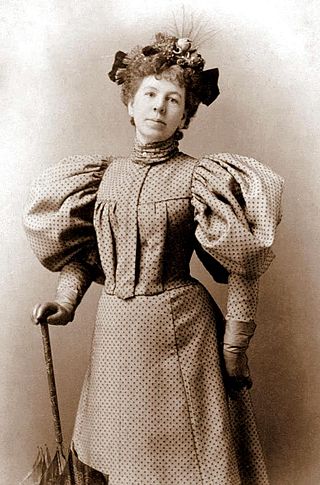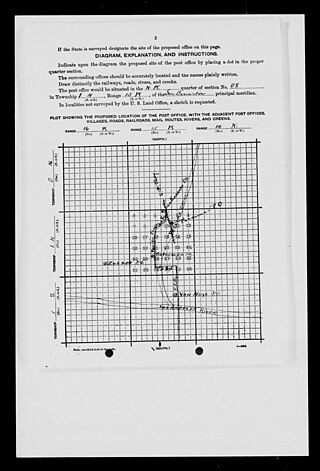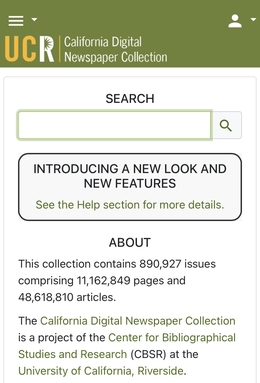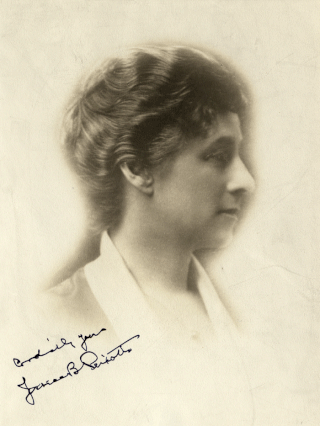Related Research Articles

Clara Shortridge Foltz was an American lawyer, the first female lawyer on the West Coast, and the pioneer of the idea of the public defender. The Criminal Courts Building in downtown Los Angeles was renamed after her in 2002, and is now known as the Clara Shortridge Foltz Criminal Justice Center.
The Western Pacific Railroad (1862-1870) was formed in 1862 to build a railroad from Sacramento, California, to the San Francisco Bay, the westernmost portion of the First transcontinental railroad. After the completion of the railroad from Sacramento to Alameda Terminal on September 6, 1869, and then the Oakland Pier on November 8, 1869, which was the Pacific coast terminus of the transcontinental railroad, the Western Pacific Railroad was absorbed in 1870 into the Central Pacific Railroad.

Mission Acres was a historic rural community in the northern San Fernando Valley. Its historic boundaries correspond roughly with the former community of Sepulveda and present day community of North Hills within Los Angeles, California. The community's western border was Bull Creek, which flowed south out of Box Canyon in the western San Gabriel Mountains near San Fernando Pass.

The California Digital Newspaper Collection (CDNC) is a freely-available, archive of digitized California newspapers; it is accessible through the project's website. The collection contains over six million pages from over forty-two million articles. The project is part of the Center for Bibliographical Studies and Research (CBSR) at the University of California Riverside.

Jessica Blanche Peixotto was a Jewish-American educator and writer.
Rose Hooper (1876-1963) was an American painter of miniatures. Born in San Francisco, she was the daughter of Col. William B. Hooper, proprietor of the Occidental Hotel in San Francisco, CA, and his wife, Eleanor. The family was part of high society in San Francisco, and Rose Hooper was a debutante in the 1895–1896 season. Hooper married Charles Albert Plotner on October 25, 1903, in Philadelphia, PA. The couple had a son, Selden Hooper Plotner, but divorced in 1910. Hooper's second husband was William C. Lyons.

Edith Monica Jordan Gardner was an American educator, specialized in history and an activist, including woman's suffrage and in the Sierra Club. She was president of the Southern California Social Science Association, Town and Gown Club, Cornell Women's Club of Northern California, Stanford Woman's Club, and the University of California branch of the Equal Suffrage League, among others. She was the head of the History Department at the John H. Francis Polytechnic High School, chairman of the Department of Legislation Oakland Forum, and one of the earliest members of the Sierra Club.

Clara Taggart MacChesney (1860/61-1928) was an American painter and writer known for her figurative painting, landscapes and “scenes and people of Holland.”
This timeline provides an overview of the political movement for women's suffrage in California. Women's suffrage became legal with the passage of Proposition 4 in 1911 yet not all women were enfranchised as a result of this legislation.

Women's suffrage in California refers to the political struggle for voting rights for women in the state of California. The movement began in the 19th century and was successful with the passage of Proposition 4 on October 10, 1911. Many of the women and men involved in this movement remained politically active in the national suffrage movement with organizations such as the National American Women's Suffrage Association and the National Woman's Party.
Selina Solomons (1862–1942) was a California suffragist active in the 1911 campaign which resulted in the passage of Proposition 4. Solomons wrote a first hand account of the movement titled, "How We Won the Vote in California".

Hettie Belle Ege was an American professor of mathematics. From 1914 to 1916, she was the acting president of Mills College.
Maria Guadalupe Evangelina de Lopez (1881-1977) was a California suffragist and an educator from Los Angeles. In the 1910s, she campaigned and translated at rallies in Southern California, where suffragists distributed tens of thousands of pamphlets in Spanish.

Robert Whitaker was a Baptist minister and political activist born in 1863 in Padiham, Lancashire, England. He died in Los Gatos, CA in 1944. In 1869 he moved with his family to the United States. After attending Andover Newton Theological School he went on to hold several pastorates in the western United States including Oakland, CA, Los Gatos, CA., and Seattle, WA.
Adelaide Smith was an American mathematician who studied with David Hilbert at the University of Göttingen, traveled to South Africa to teach at the only women's college south of the equator, and wrote two books about her experiences there. Her appointment as a mathematics instructor at the University of California, Berkeley was reported nationally. In later life she became the principal of a school for girls, the second oldest in California.
Mary Elizabeth Simpson Sperry was a leading California suffragist who served as president of the California Woman Suffrage Association.

Minora Ellis Kibbe was a social reformer and suffragist from California. She ran for a seat on the San Francisco area school board in 1908, and for California's 36th State Assembly district in 1918.

The California Equal Suffrage Association was a political organization in the state of California with the intended goal of passing women's suffrage.

Women's suffrage in Iowa efforts began early in Iowa's history. During the territory's Constitutional Convention, discussions on both African American and women's suffrage took place. Early on, women's rights were discussed in the state by women such as Amelia Bloomer and petitions for suffrage were sent to the Iowa state legislature. While African American men earned the right to vote in 1868, women from all backgrounds had to continue to agitate for enfranchisement. One of the first suffrage groups was formed in Dubuque in 1869. Not long after, a state suffrage convention was held in Mount Pleasant in 1870. Iowa suffragists focused on organizing and lobbying the state legislature. In 1894, women gained the right to vote on municipal bond and tax issues and also in school elections. These rights were immediately utilized by women who turned out in good numbers to vote on these issues. By the 1910s, the state legislature finally passed in successive sessions a women's suffrage amendment to the state constitution. This resulted in a voter referendum to be held on the issue on June 5, 1916. The campaign included anti-suffrage agitation from liquor interests who claimed that women's suffrage would cause higher taxes. The amendment was defeated, though a subsequent investigation turned up a large amount of fraud. However, the election could not be invalidated and women had to wait to vote. On July 2, 1919, Iowa became the tenth state to ratify the Nineteenth Amendment.
References
- ↑ Strong-Minded Women -the Emergence of the Woman Suffrage Movement in Iowa-Louise R. Noun, Iowa State University Press, 1969
- ↑ Leonard, John William (May 17, 1914). "Woman's Who's who of America: A Biographical Dictionary of Contemporary Women of the United States and Canada, 1914-1915". American Commonwealth Company – via Google Books.
- ↑ Leonard, John William (1914). Woman's Who's who of America: A Biographical Dictionary of Contemporary Women of the United States and Canada, 1914-1915. American Commonwealth Company. p. 657.
snell seminary oakland.
- ↑ "The". osughost.imodules.com.
- ↑ "San Francisco Call 15 May 1908 — California Digital Newspaper Collection". cdnc.ucr.edu.
- ↑ "San Francisco Call 19 July 1911 — California Digital Newspaper Collection". cdnc.ucr.edu.
- ↑ "Simple Service Marks Mrs. Poulson's Funeral; Last Founder of Seminary Will Be Succeeded by Miss Adelaide Smith". San Francisco Call. Vol. 114, no. 34. 4 July 1913 – via California Digital Newspaper Collection.
- ↑ "Snell – Wellesley". CTA Journal. 10: 525. 1915.
- ↑ A Handbook of Private Schools for American Boys and Girls. Vol. 32. Sargent handbooks. 1950. p. 572.
- ↑ "snell seminary - OMCA COLLECTIONS". collections.museumca.org.
- ↑ Goetzman, H. J. "[Letter], Mrs. M. J. Goetzman [to] Miss Edith Goetzman".